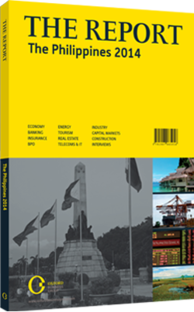OBG talks to Yvonne Yuchengco, President and CEO, Malayan Insurance

Interview: Yvonne Yuchengco
What opportunities have been unlocked by the expansion of microinsurance to cover the nation’s underserved population?
YVONNE YUCHENGCO: The most significant sector development is microinsurance. This has been spearheaded by the Department of Finance, which, in conjunction with the Insurance Commission, the Bangko Sentral ng Pilipinas, and the insurance industry organisations Philippine Insurers and Reinsurers Association (PIRA) and Philippine Life Insurance Association, established the Framework for Microinsurance, which set microinsurance rates, coverage and benefits.
The framework provided insurance companies with guidelines on how to include the underserved population, currently comprising 50-60% of the country, or 40m people, to be protected by these new products. This initiative has created good opportunities for insurers, who must understand the needs of these potential new market segments and tailor products to help them protect their gains, such as in the case of farmers who must safeguard their harvests, and be protected from being in a cycle of indebtedness.
Microinsurance can also be distributed through indexed products, especially with weather-indexed or loan protection products, the latter guaranteeing the protection of a loan taken by the family breadwinner in case of death and even allocating some money to the beneficiary. In addition, the microinsurance segment has developed products that target students whose tuition costs are protected in case the breadwinner of the family has an accident.
Other important products protect affiliates from pawnshop loans, which are financial institutions of last resort that cater to the lower income population that is in need of immediate cash flow.
Microfinance institutions (MFIs) are currently the primary distribution channels, as they are already serving the vast underserved population. Through MFIs, Malayan Insurance is able to reach up to 2m people through their various fund-mobilisation networks.
How is the non-life insurance sector addressing low financial literacy and diversification of products to reverse low penetration of the retail market?
YUCHENGCO: The industry has several ongoing initiatives to remediate financial illiteracy. For instance, the International Institute for Educational Planning and PIRA work together to educate not only industry professionals, but also institutions that may require this type of awareness. They also involved the Rural Bankers Association of the Philippines, which is a major distribution channel with several thousand bank branches nationwide and ties with bigger banking players. The insurance sector also works with non-governmental organisations, mutual benefit groups and cooperatives.
The Department of Education has also taken steps to add financial literacy subjects to the curricula of secondary schools. In addition, departing overseas Filipino workers are required to take a seminar on financial literacy to help them manage their earnings from jobs abroad, and the insurance industry has participated in these education efforts.
The insurance industry has realised that it needs to pay attention to serving the retail sector as a means of balancing their respective risk portfolios. Companies like Malayan Insurance have approached retail by establishing a sub-group in the company focused on retail products. This team has consistently experienced double-digit growth as a result, especially in motorcar, personal accident and casualty products.
In addition to these new products, there are more aggressive marketing efforts being made to generate higher awareness in the public, a process strengthened by the occurrence of several natural disasters in the Philippines. Whereas in the past, people preferred to be self-insured, the sense of unpredictability brought by recent severe weather caused by climate change has led to higher demand for specific insurance products. However, non-life insurers now face the challenge of how to underwrite appropriately and guarantee that risks can be undertaken given the new landscape.
You have reached the limit of premium articles you can view for free.
Choose from the options below to purchase print or digital editions of our Reports. You can also purchase a website subscription giving you unlimited access to all of our Reports online for 12 months.
If you have already purchased this Report or have a website subscription, please login to continue.

